Abstract
Aaslestad, H. G. (Louisiana State University, Baton Rouge), and A. D. Larson. Bacterial metabolism of 2-methylalanine. J. Bacteriol. 88:1296–1303. 1964.—A bacterium isolated from soil was found to oxidize 2-methylalanine to 65% of the theoretical value by an adaptive enzyme system. Manometric experiments with whole cells indicated that acetone but not isopropylamine was an intermediate. Cellular extracts produced carbon dioxide from 2-methylalanine when pyruvate was added to the reaction mixture. Dialysis stimulated the 2-methylalanine metabolizing system, providing pyridoxal phosphate and pyruvate were supplied. A study of the stoichiometry of this pyridoxal phosphate-dependent reaction indicated that acetone and carbon dioxide were principal products. The formation of carbon dioxide from 2-methylalanine seemed dependent upon transfer of the amino group to pyridoxal phosphate. Other 2-methyl amino acids were found to be decarboxylated by this system, thus indicating a lack of absolute specificity.
Full text
PDF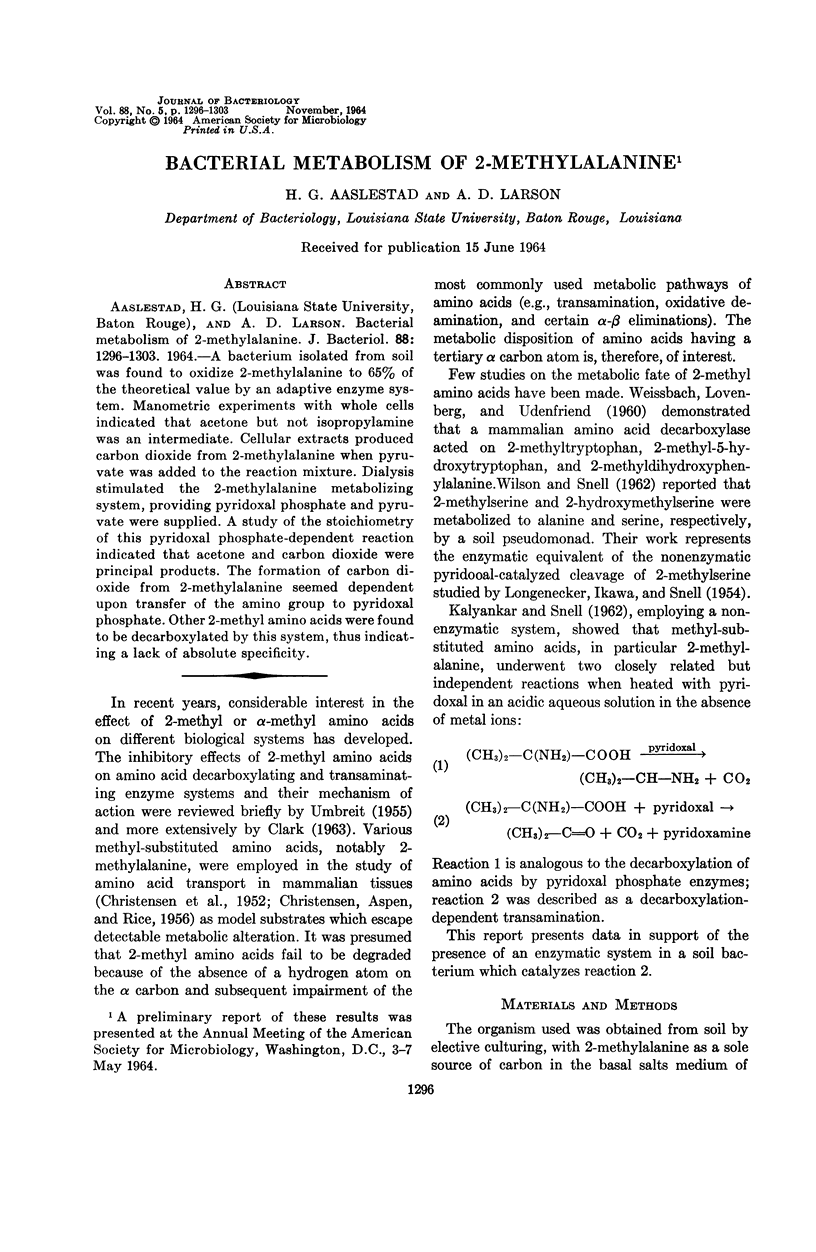
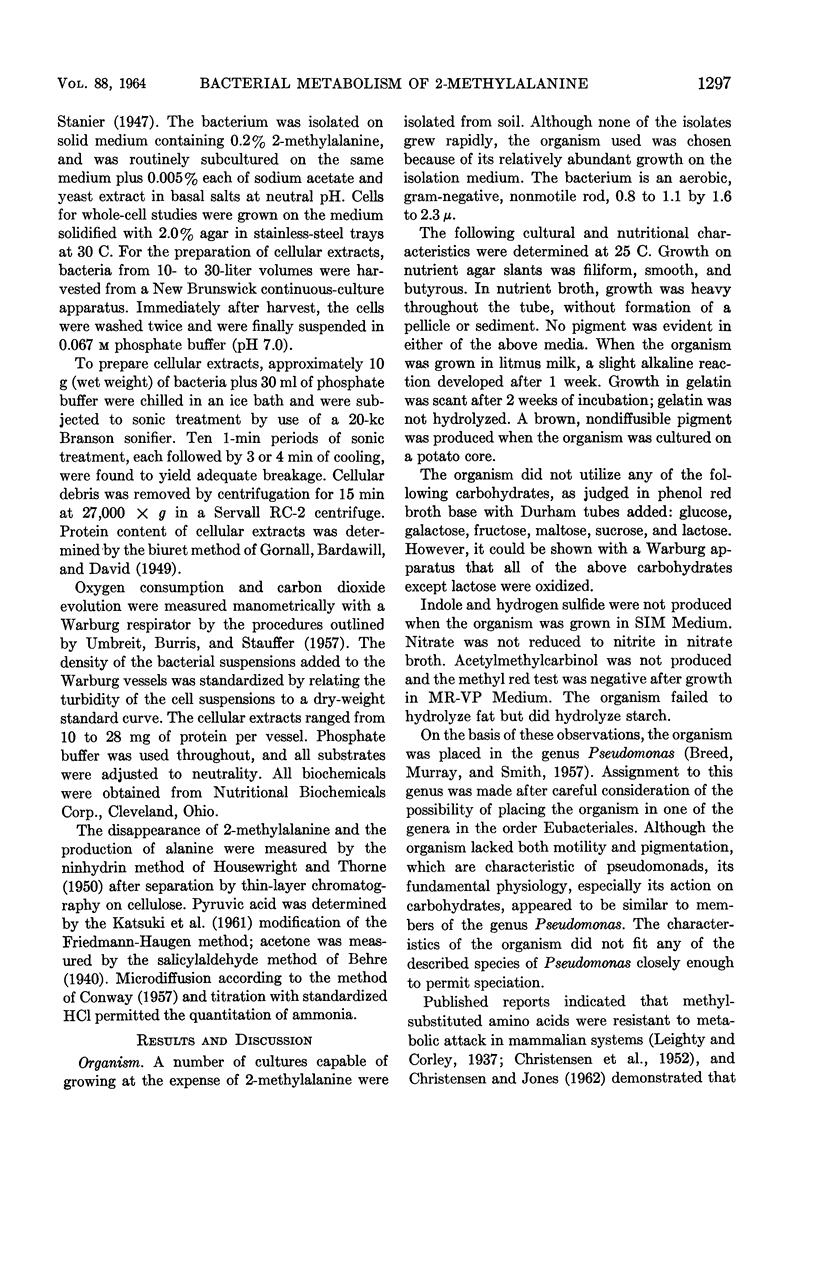
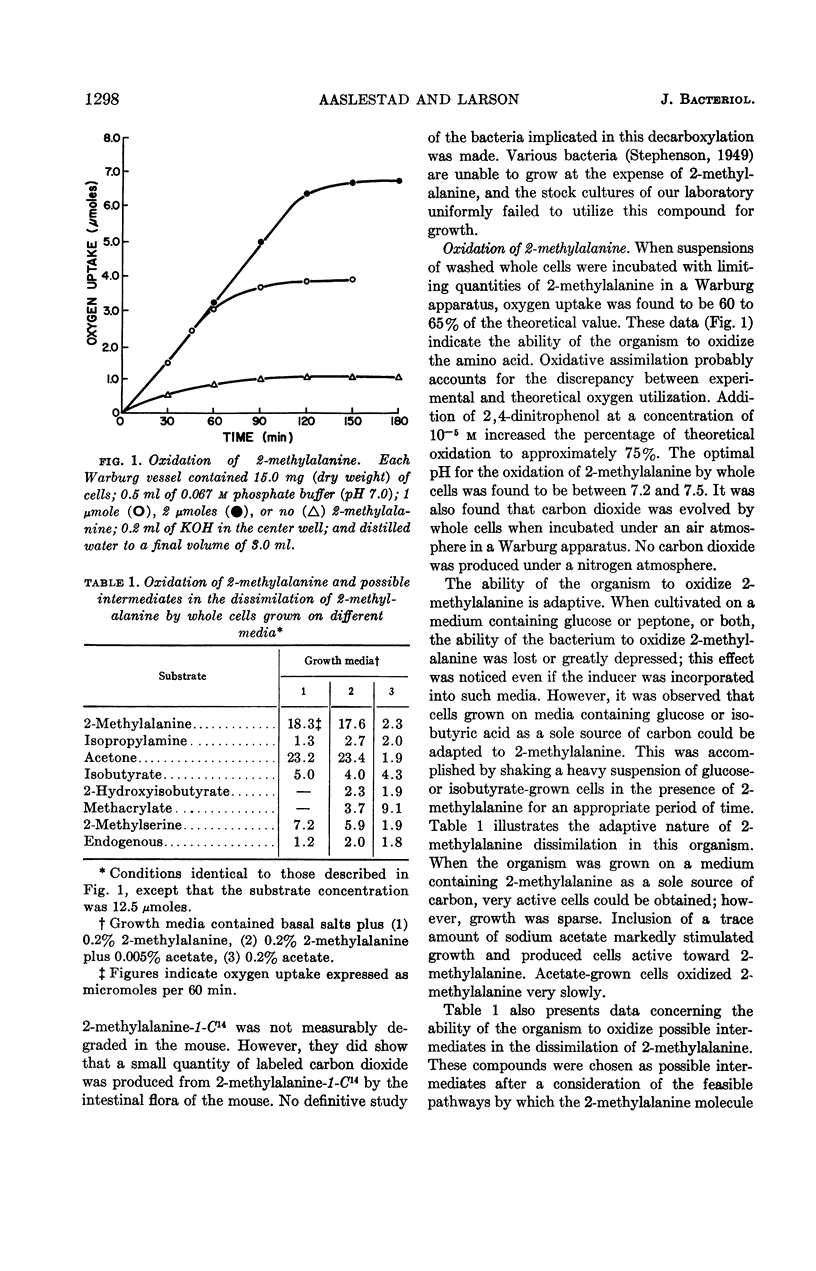
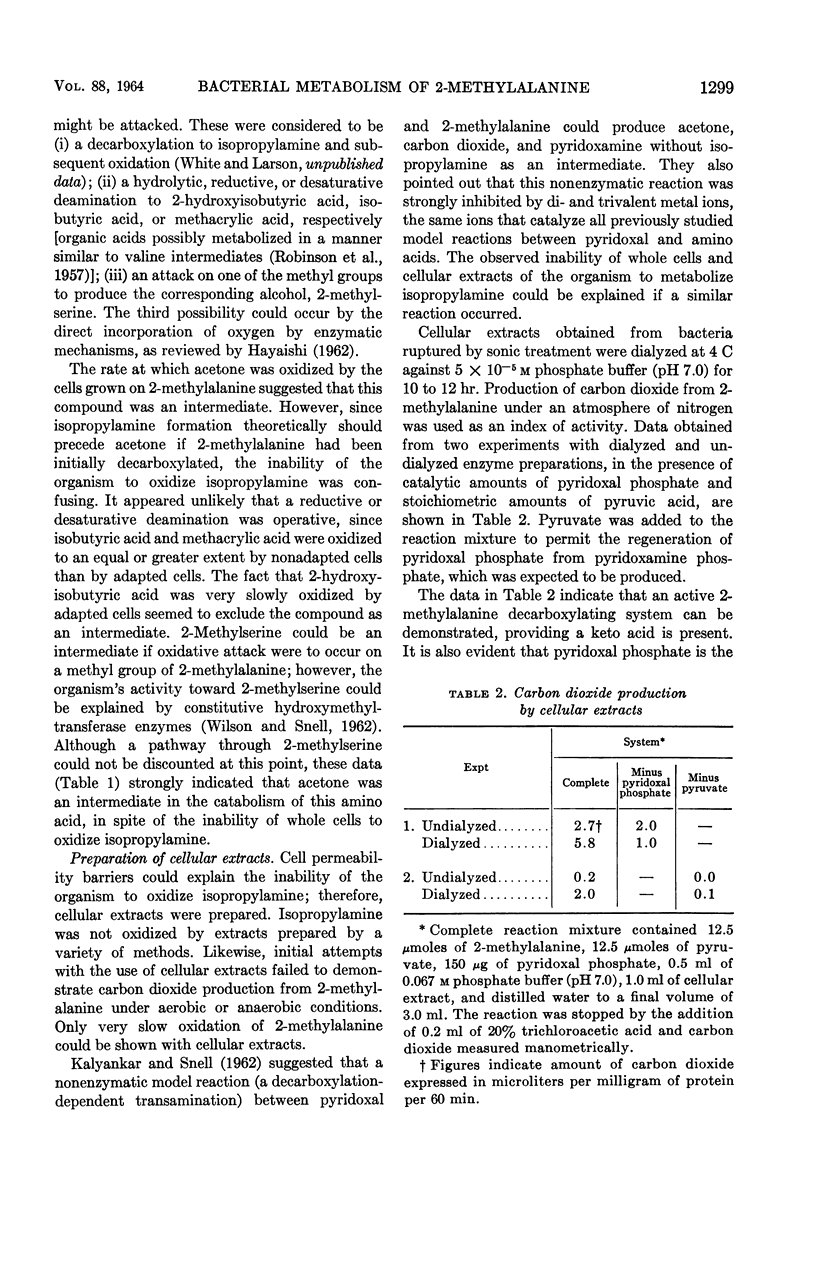
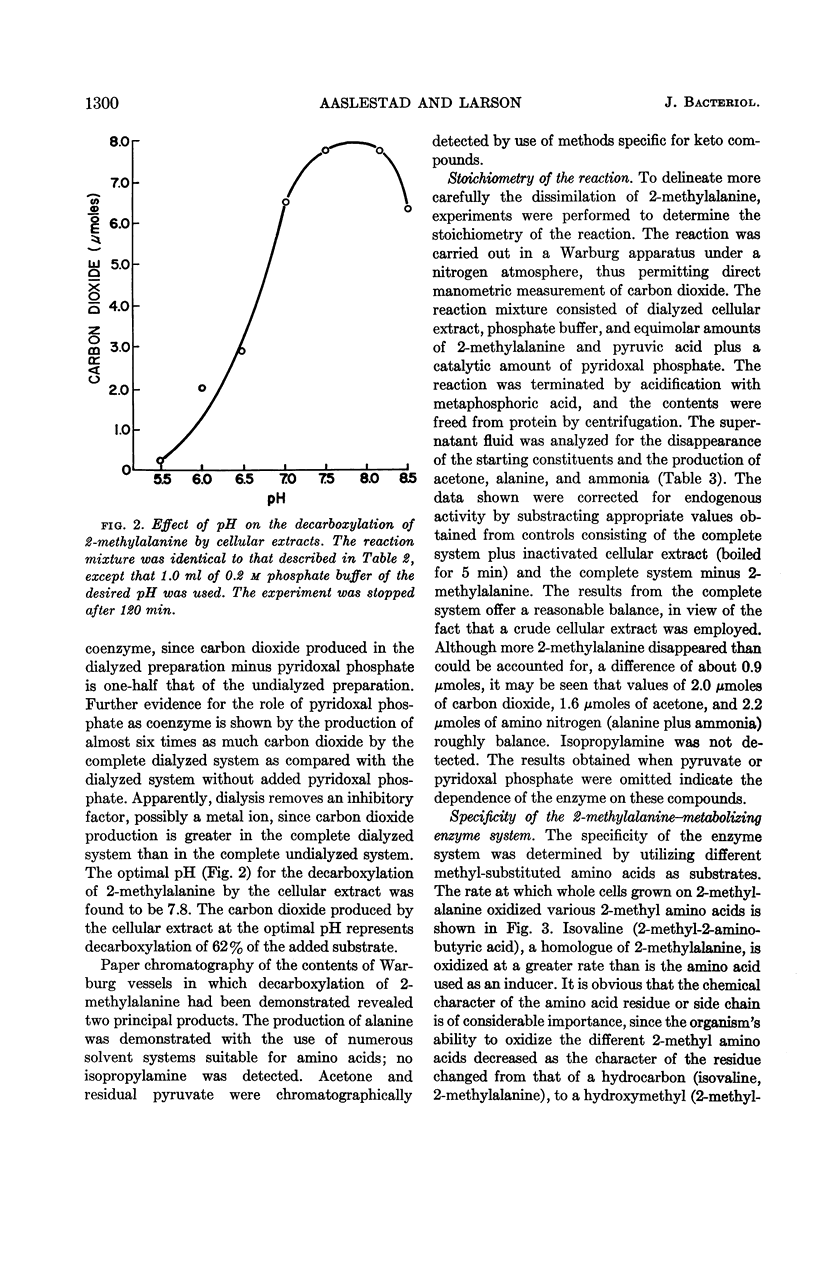
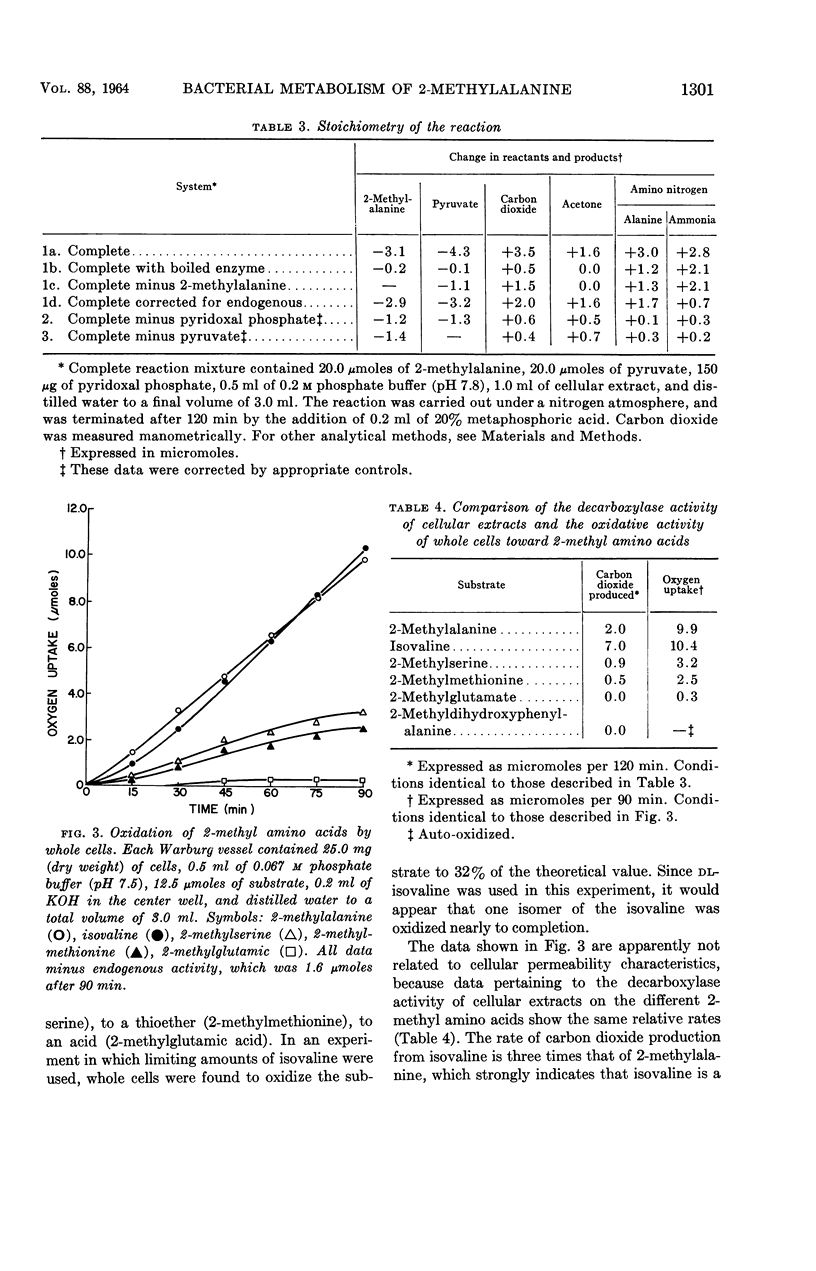
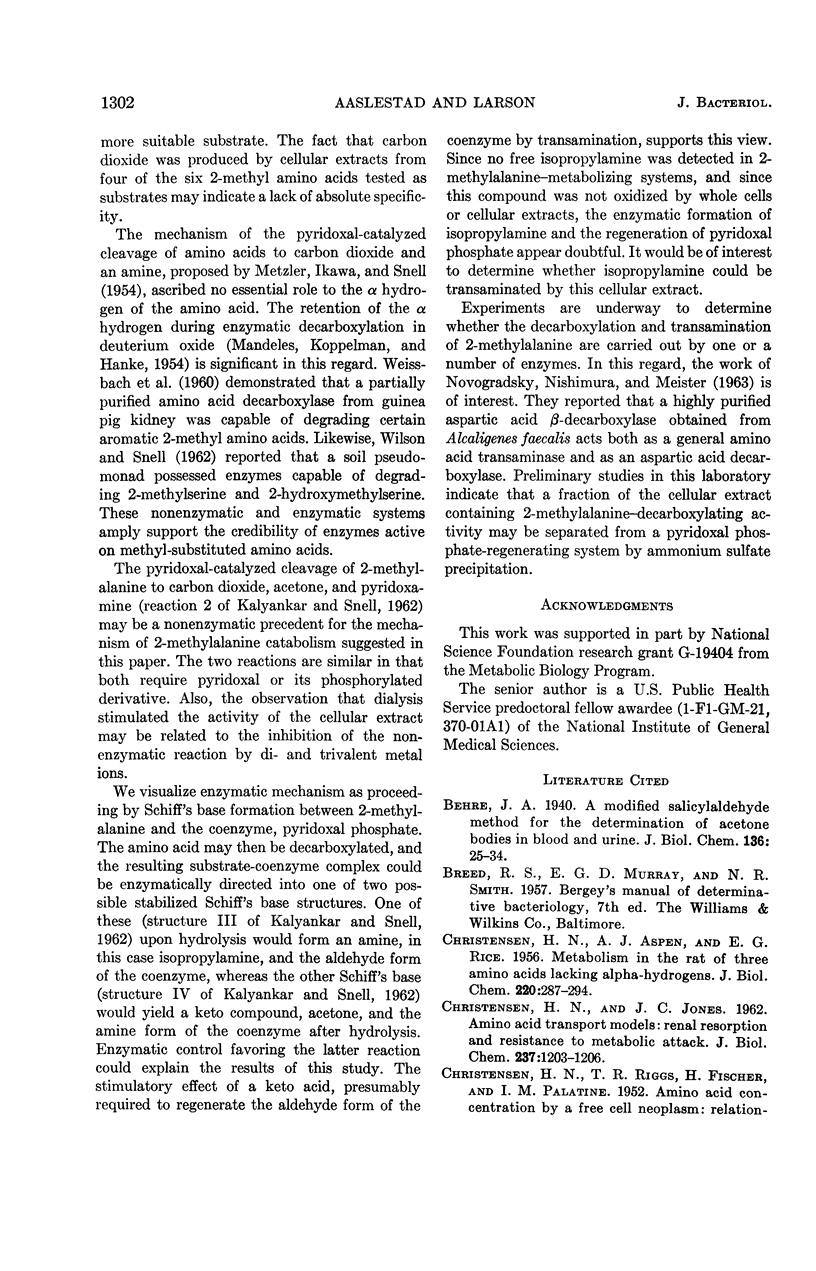
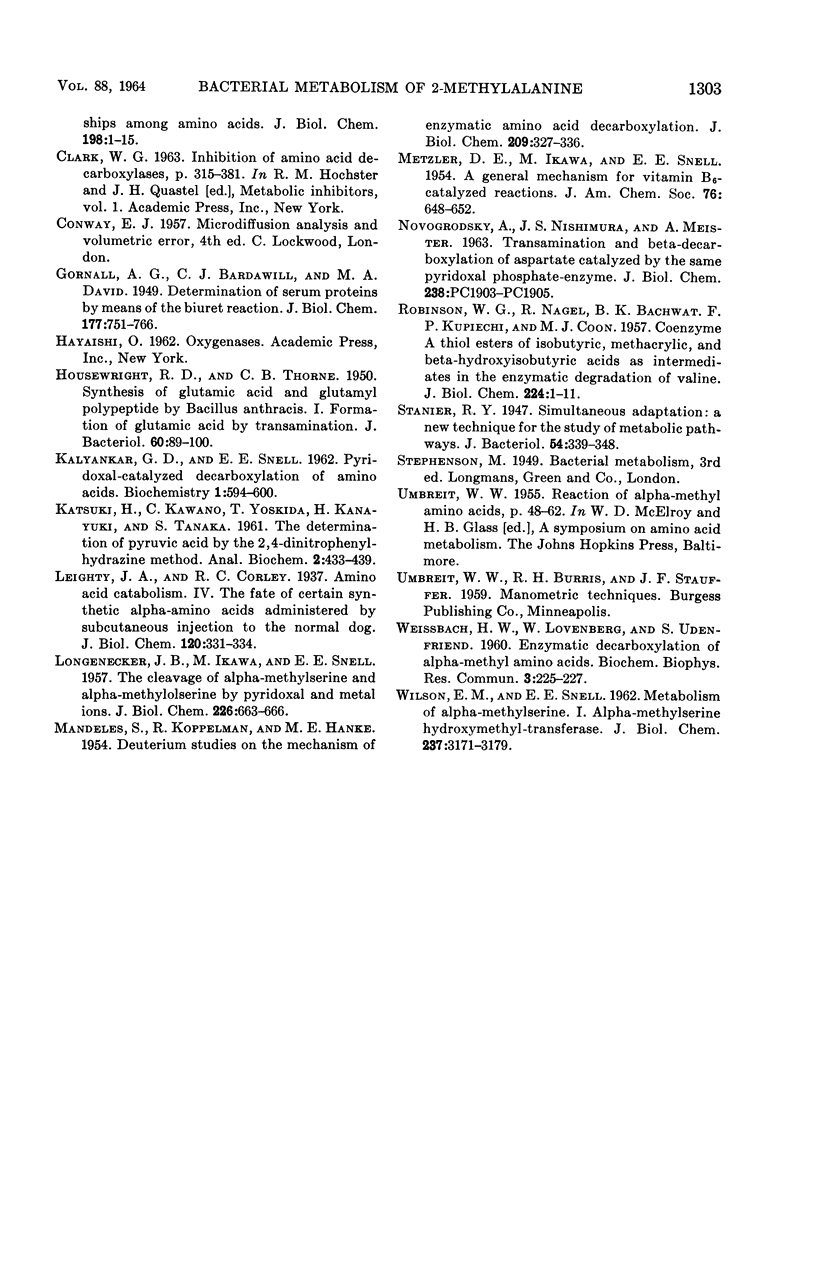
Selected References
These references are in PubMed. This may not be the complete list of references from this article.
- BACHHAWAT B. K., COON M. J., KUPIECKI F. P., NAGLE R., ROBINSON W. G. Coenzyme A thiol esters of isobutyric, methacrylic, and beta-hydroxyisobutyric acids as intermediates in the enzymatic degradation of valine. J Biol Chem. 1957 Jan;224(1):1–11. [PubMed] [Google Scholar]
- CHRISTENSEN H. N., ASPEN A. J., RICE E. G. Metabolism in the rat of three amino acids lacking alpha-hydrogen. J Biol Chem. 1956 May;220(1):287–294. [PubMed] [Google Scholar]
- CHRISTENSEN H. N., JONES J. C. Amino acid transport models: renal resorption and resistance to metabolic attack. J Biol Chem. 1962 Apr;237:1203–1206. [PubMed] [Google Scholar]
- CHRISTENSEN H. N., RIGGS T. R., FISCHER H., PALATINE I. M. Amino acid concentration by a free cell neoplasm; relations among amino acids. J Biol Chem. 1952 Sep;198(1):1–15. [PubMed] [Google Scholar]
- HOUSEWRIGHT R. D., THORNE C. B. Synthesis of glutamic acid and glutamyl polypeptide by Bacillus anthracis. I. Formation of glutamic acid by transamination. J Bacteriol. 1950 Jul;60(1):89–100. doi: 10.1128/jb.60.1.89-100.1950. [DOI] [PMC free article] [PubMed] [Google Scholar]
- KALYANKAR G. D., SNELL E. E. Pyridoxal-catalyzed decarboxylation of amino acids. Biochemistry. 1962 Jul;1:594–600. doi: 10.1021/bi00910a008. [DOI] [PubMed] [Google Scholar]
- KATSUKI H., KAWANO C., YOSHIDA T., KANAYUKI H., TANAKA S. The determination of pyruvic acid by 2,4-dinitrophenylhydrazine method. Anal Biochem. 1961 Oct;2:433–440. doi: 10.1016/0003-2697(61)90047-1. [DOI] [PubMed] [Google Scholar]
- LONGENECKER J. B., IKAWA M., SNELL E. E. The cleavage of alpha-methylserine and alpha-methylolserine by pyridoxal and metal ions. J Biol Chem. 1957 Jun;226(2):663–666. [PubMed] [Google Scholar]
- MANDELES S., KOPPELMAN R., HANKE M. E. Deuterium studies on the mechanism of enzymatic amino acid decarboxylation. J Biol Chem. 1954 Jul;209(1):327–336. [PubMed] [Google Scholar]
- Stanier R. Y. Simultaneous Adaptation: A New Technique for the Study of Metabolic Pathways. J Bacteriol. 1947 Sep;54(3):339–348. doi: 10.1128/jb.54.3.339-348.1947. [DOI] [PMC free article] [PubMed] [Google Scholar]
- WEISSBACH H., LOVENBERG W., UDENFRIEND S. Enzymatic decarboxylation of alpha-methyl amino acids. Biochem Biophys Res Commun. 1960 Aug;3:225–227. doi: 10.1016/0006-291x(60)90228-x. [DOI] [PubMed] [Google Scholar]
- WILSON E. M., SNELL E. E. Metabolism of alpha-methylserine. I. alpha-Methylserine hydroxymethyltransferase. J Biol Chem. 1962 Oct;237:3171–3179. [PubMed] [Google Scholar]


